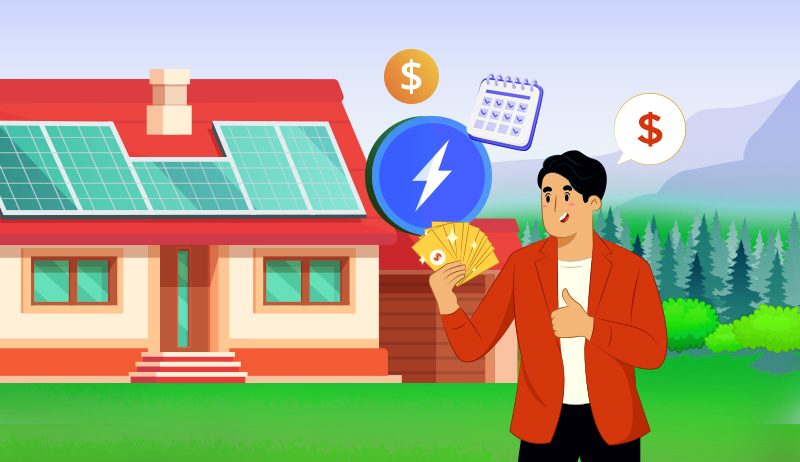From January 2024, Victoria has announced that there will be no gas connection in the new homes. And as energy prices are rising rapidly, it is best to electrify all homes and businesses in Australia.
But before you electrify your home and business, let’s find out the benefits of electrification in Australia. This blog will simplify your transition to electrification and bring you closer to net-zero emissions.
Save Thousands Per Year

Australia is far ahead of the game in rooftop solar, and there is a chance to delve into those abundant resources and ensure that all Australian households and businesses reap the benefits of electrification.
For instance, you can save thousands of dollars per year in household costs if you electrify your home with solar panels on the roof, a home battery, electric vehicles in the garage, and replace gas appliances with efficient electric ones.
New appliance and vehicle efficiency enhancements reduce energy usage, and Australia’s world-leading solar is cheap enough to power the house while saving money- it’s a win-win situation!
Electrification of Australia’s homes—switching to more energy-efficient appliances and transitioning away from fossil fuels like gas, oil, and coal—would reduce our national carbon footprint by 28-42% (45-70% if small businesses are included). It would help create a safer climate.
Reduce Health Risk

Electrification of your household will reduce health risks related to gas heating, gas cooking, and cars.
Cooking and heating with gas are daily in Australian homes and are risk factors for several serious health problems; however, the public is unaware of these dangers. It is estimated that gas stoves cause 12% of childhood asthma in Australia.
Gas stoves, standard in Australian homes, produce dangerous levels of indoor air pollution.
For example, homes with gas stoves typically have significantly higher nitrogen dioxide concentrations—a gas emitted during gas combustion—than those with electric stoves. This can have various respiratory effects, particularly in children and those with conditions like asthma.
Furthermore, using a gas hot water system can release toxic fumes, such as carbon monoxide and nitrogen dioxide.
Also, it must be handled with great care and caution, as it can ignite with pressure. So, it requires a designated spot with proper ventilation and precaution.
And most importantly, gas in a non-renewable energy source using it increases your carbon footprint, hence a step back from net-zero emission.
Thus, your pocket, household, and health should electrify your home by switching your gas stove with an electric stove and gas hot water systems with electric hot water heat pumps.
Electric hot water heat pumps are less dangerous than gas hot water systems as they don’t require gas combustion. And if you already have solar panels, they generate the electricity needed to run the heat pump. Hot water appears to be free while emitting no GHG gases.
Also, switching to electric vehicles can reduce carbon emissions and help minimize air pollution, contributing to a cleaner and healthier environment.
With this transition, you can align with Australia’s commitment to combat climate change and achieve sustainability goals by shifting from traditional fossil fuel-based energy sources to cleaner electricity.
Creates New Job Opportunities
The electrification trend has the potential to create new job opportunities in renewable energy, electric vehicle manufacturing, energy storage, and other emerging industries. This transition can build a skilled workforce and support economic development.
For instance, in the rooftop solar industry, approximately 18,500 people are already employed full-time.
Over ten years, electrifying Australia’s entire residential gas appliance stock is expected to generate approximately 20,000 full-time jobs.
These findings are of great public interest and will only grow in importance. This is reflected, for example, in the Senate’s recently announced inquiry into residential electrification, the findings of which are expected in late 2024.
Therefore, the development of new infrastructure, such as electric vehicle charging stations, renewable energy facilities, and smart grids, may be required as part of the electrification transition.
These infrastructure investments have the potential to boost economic growth while also providing opportunities for innovation.
Helps Make a Better Economy

In developing countries, having electricity is a big help in improving the economy. Having reliable and affordable electricity helps businesses run smoothly and allows people to start their businesses.
Projects to bring electricity to these areas not only solve the energy problem but also help to reduce poverty and improve people’s lives.
The Australian government is committed to meeting the Renewable Energy Target (RET). As a result, a significant market shift is visible.
Companies are attempting to fully electrify their operations by 2035 to meet rising demand and attract additional investment. Almost 60% of these businesses intend to meet their electric targets.
The market is expanding because more people want electric vehicles, solar panels, and cleaner energy. There are more charging stations for electric vehicles and more solar panels on rooftops in wealthier countries, and the government encourages using cleaner energy.
To reap the benefits of electrification, visit our residential heat pump and air conditioning page. Commercial solar, commercial heat pumps, and battery storage are all available to electrify your future.
We at Cyanergy believe in long-term sustainability. Our mission is to promote eco-friendly strategies that increase business efficiency and energy.







